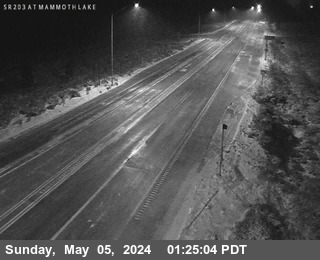Brought to you by Howard Sheckter
Upper Ridge to Remain Entrenched Over the West Coast for the Next Week…..A Small Upper Short Wave will bring some Cooling and Breeze Next Thursday/Friday……Comments about the Pattern…….
Saturday January 18, 2014
9:30am Wednesday:
GFS flips wet again with mini AR for Central Ca. during week 2.
Don’t buy into anything until it gets well into Week 1
Wednesday AM 7:30AM
Following up on Last night’s post below…..It is becoming more clear that the upper ridge currently in the PNA region will retrograde to about 130W to 140W. This puts us back into a cooler pattern with NW flow aloft where by weather systems will mostly drop there precipitation in the Pacific NW, similar to the month of December and early January. Sensibly…….It will turn cooler and breezier. However, thus far the “Change” in the pattern for the end of the month of January is still a dry one into the first week of February. Sorry about this but the Dweebs are all about telling it as we see it…..
At 8:30am today……Just has a peak at the Coupled Forecast Systems (CFS v2) weeks 3 and 4. That begins the 5th of February…. It is encouraging from a climate or inter-seasonal perspective. However, until the Dweebs see the changes in the week 1 period, it is just more hope for change.
SEE: http://www.cpc.ncep.noaa.gov/products/people/sweaver/cfs_fcst/images1/wk3.wk4_20140121.NA.gif
11:15PM Tuesday:
The GFS continues its back peddling from any significant storminess in the California weather pattern. It will be interesting to follow the ECMWF ensembles. Although its ensembles still show the upper jet sagging south, I have noticed that there is a trend the past two days in the deterministic runs of a drier scenario for short waves entering the state. If this trend continues, then the ensembles will also follow.
Although no one is talking about it and I have mentioned it several times….The MJO has been almost non-existent this winter in modulating the westerlies in a positive manner for California. At the moment the forecast for the MJO is to remain moderate to strong in phases 6 and 7.
This means that tropical forcing is stuck in the Far Western Pacific. This in itself favors the forecast pattern of continued ridging in the Northeast Pacific over the next two weeks which is typically dry for California. SEE: http://www.cpc.ncep.noaa.gov/products/precip/CWlink/MJO/Composites/Precipitation/
Also See the MJO Phase space> It is clearly in Phase 6: http://cawcr.gov.au/staff/mwheeler/maproom/RMM/phase.Last40days.html
Now here is NCEP forecast for the MJO: http://www.cpc.ncep.noaa.gov/products/precip/CWlink/MJO/CLIVAR/EMON_phase_51m_full.gif
With the MJO supporting the NE pacific upper ridge it will be difficult to get undercutting without a strong subtropical jet more associated with an EL Nino year. I am becoming more concerned that the pattern change in the making will not be all that supportive to anything resembling wet for the next 1 to 2 weeks or as long as the MJO remains in phases 6 and 7. This is not to say that we can not get a small storm or two in here, but a major one does not look likely in my opinion.
Again, I will be watching the ECMWF ensembles which have thus far been the most supportive in the up coming pattern change for some beneficial systems. Later next week will be critical for us to see follow through for the changes well advertised in week 2…to move up to week 1.
Saturday 1:55PM
Don’t buy into the new 12z GFS….Its another head fake. Stick with the ECMWF…
IE; Buy the System coming through the ridge……not carving a new trof out along the west coast.
—————————————————————————————————————————–
I think that most folks are experiencing a weather type today, unremembered in their lifetime. The only year that is similar here in Mammoth is the winter of 1977 with 3.6 inches up on the pass. As the days click by, more records will fall for dryness…. On a bright note, this is probably a worst case scenario for businesses in our area due to the lack of snow. So if you’re a Mammoth Lakes business owner, this is the year you will want to plan for in a drought year. Take note of the numbers and plan your future accordingly. Knowing what your bottom line is, is always helpful for future planning. Last year was also a dry year, but we received most of our snow early in December and the skiing was Fab for the holidays.
Todays business climate is far better this year compared to the Winter of 1977, when Mammoth Mt did not have snow making. Economics are much better today than that January and February.
Mammoth Mountain continues to make snow on many of the trails, and for the most part, skiing has been good considering. The improved technology of today’s snow making systems, that can literally make snow with the ambient temperature above freezing is a big reason. You may say that is impossible to make snow when it is above freezing but it is the truth. It has more to do with the amount of moisture in the air than temperature. As an example, you can still make snow when the temperature is in the mid 30s as long as the air mass is dry enough. The key induce is something called the wet bulb temperature. It has to do with the amount of moisture in the air (RH) VS the ambient temperature and air pressure. The key temperature for the guys up on the hill is a reading of (28F- wet) or colder. They can make snow when it is 28f wet even when the Ambient temp is in the mid 30s. Again….The pressurized spray comes out of those guns, combines with the dry air and can make snow, when temps are above freezing. So the physics behind snow making is improving, leading to good snow coverage over night. If you have not tried some of the fresh corduroy in the morning on the runs of Mammoth Mountain this year then you are doing yourself a disservice.
Mammoth Lakes still has plenty of Winter and Spring to go, to make a sizable dent in the water year between now and April 1st. Although the odds “against this winter” coming back to anything resembling a normal winter is increasing. More than likely, it will begin to snow again during the month of February as even during the Winter of 77, it began to snow in mid February. Guaranteed? Of course not…..but when your in the bottom 5 percentile for precipitation of January…..you can only keep rolling and hitting craps so many times in a row.
Once again, there are discussions abound all over the Net about what is causing the drought. I will tell you in my opinion, that there is no single silver bullet. You could gather up every index out there, relating to Air Sea coupling, AAM, combined with Mountain Torque, the direction of the Strato Winds and even the Solar puzzle…..there are probably still variables out there that have not yet been discovered.
We do know that certain indexes like ENSO can play a dominant role when they are strong enough in this particular region. However, in this region, when ENSO is neutral, other variables combined will rise up and become more of an influence. No doubt this year will become a research project for climate scientists with something called the scientist method that will take time. However, be careful of believing the quick knee jerk reaction reasoning’s. By nature, we all want quick answers. Accordingly I am always concerned about being right for all the wrong reasons. So I’ll take my own pill as a hobbyist knowingly that it is a placebo and thus worthless without the proof of the method of science.




